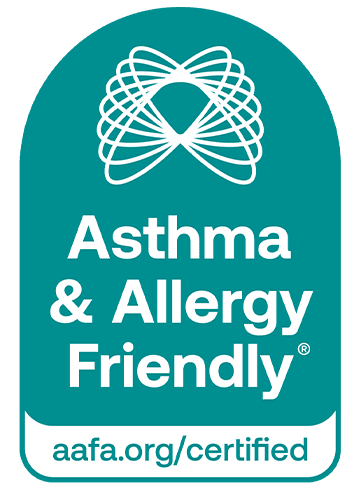Allergies
Insect Allergy
However, you can find two very common “bugs” all year long in homes and buildings. Neither one needs to bite or sting you to cause an allergic reaction, but both trigger allergy and asthma in many people.
What Kinds of Insects Cause Allergic Reactions?
There are many different kinds of insects or “insect-like bugs” that can cause an allergic reaction:
Stinging Insects
Bees, wasps, hornets, yellow-jackets and fire ants are the most common stinging insects that cause an allergic reaction. When these insects sting you, they inject a toxic substance called venom. Most people stung by these insects recover within hours or days. In others, this venom can trigger a life-threatening allergic reaction.
Biting Insects
Mosquitoes, kissing bugs, bedbugs, fleas and certain flies are the most common biting insects known to cause an allergic reaction. Most people bitten by insects suffer pain, redness, itching, stinging and minor swelling in the area around the bite. Rarely, insect bites may trigger a life-threatening allergic reaction.
A bite from a Lone Star tick can cause people to develop an allergy to meat. These ticks carry alpha-gal (a sugar). When a tick bites a person, it transfers alpha-gal into the bloodstream. The person’s immune system then reacts to it. Alpha-gal is also found in mammal meat (beef, lamb, pork). If you have allergy symptoms after eating meat, see an allergist.
Household Pests
Non-stinging and non-biting insects can also cause allergic reactions, particularly cockroaches and insect-like dust mites. These two insects may be the most common cause of year-round allergy and asthma. Unlike a cockroach, a dust mite is too small to see with the naked eye. The cockroach and dust mite’s waste and body cause allergic reactions. They also can trigger asthma symptoms and asthma attacks.
What Are the Signs of an Allergic Reaction to Insects?
Most people stung or bitten by insects suffer pain, redness, itching and minor swelling in the area around the bite or sting. This is a normal reaction. Most people get better within hours or days.
An allergic reaction to insects that don’t sting or bite, like cockroaches or dust mites, is different. You may sneeze, cough, have a runny or stuffy nose, or itchy eyes, nose, mouth or throat. These symptoms can be confused with the common cold, but last for weeks or months at a time. If you have asthma, an allergic reaction could trigger asthma symptoms or an asthma attack.
People can have a serious allergic reaction to stinging or biting insects. A life-threatening allergic reaction (anaphylaxis) produces signs and symptoms that require immediate medical attention. Without immediate treatment, anaphylaxis may cause death. Symptoms usually involve more than one organ system (part of the body), such as the skin or mouth, the lungs, the heart, and the gut. Some symptoms include:
- Skin rashes, itching or hives
- Swelling of the lips, tongue or throat
- Shortness of breath, trouble breathing or wheezing (whistling sound during breathing)
- Dizziness and/or fainting
- Stomach pain, vomiting, bloating or diarrhea
- Feeling like something awful is about to happen
Other serious but non-allergic reactions include:
- A toxic reaction that happens when the body reacts to insect venom like it is a poison. A toxic reaction can cause symptoms similar to those of an allergic reaction. Other symptoms include nausea, fever, fainting, seizures, shock and even death.
- Serum sickness which is an unusual reaction to a foreign substance in the body. It can cause symptoms hours or days after the sting or bite. Symptoms include fever, joint pain, other flu-like symptoms and sometimes hives.
Medical Review: October 2015
Using CERTIFIED asthma & allergy friendly® products in your home can help you have a healthier indoor environment, as well as reduce allergens.
Learn more about the asthma & allergy friendly® Certification Program by visiting aafa.org/certified.
Allergy Capitals
Your location can have an impact on your seasonal allergies. AAFA’s Allergy Capitals™ report looks at the top 100 most challenging cities in the continental United States to live with seasonal pollen allergies.















